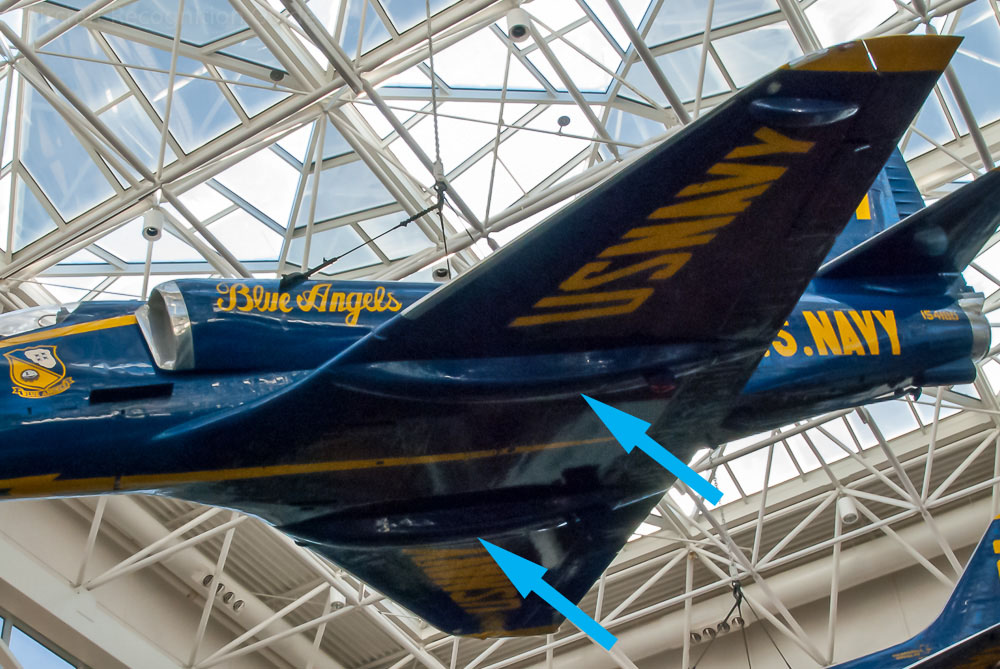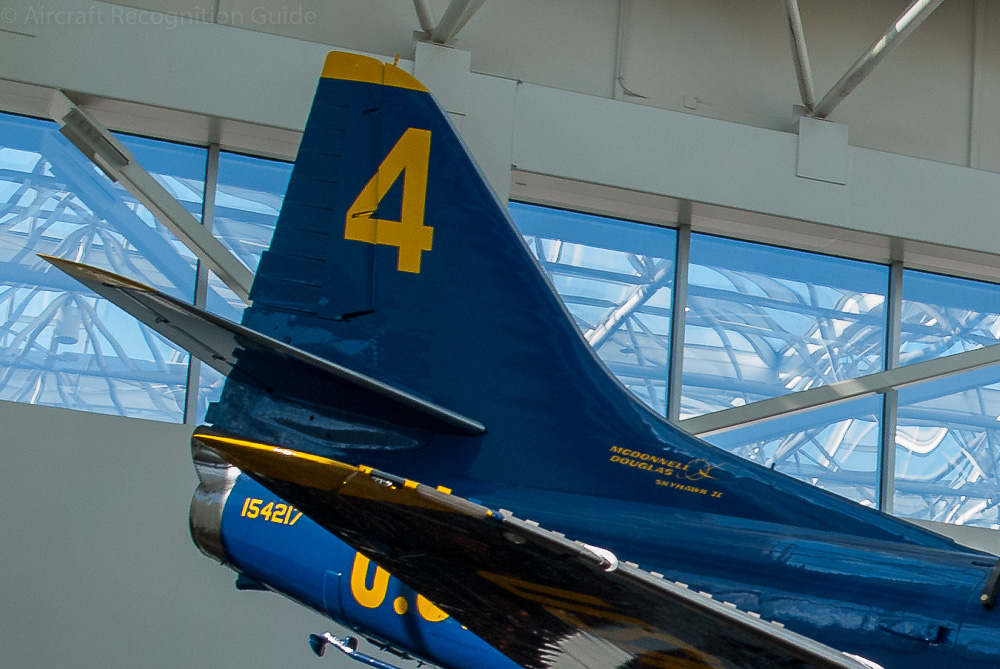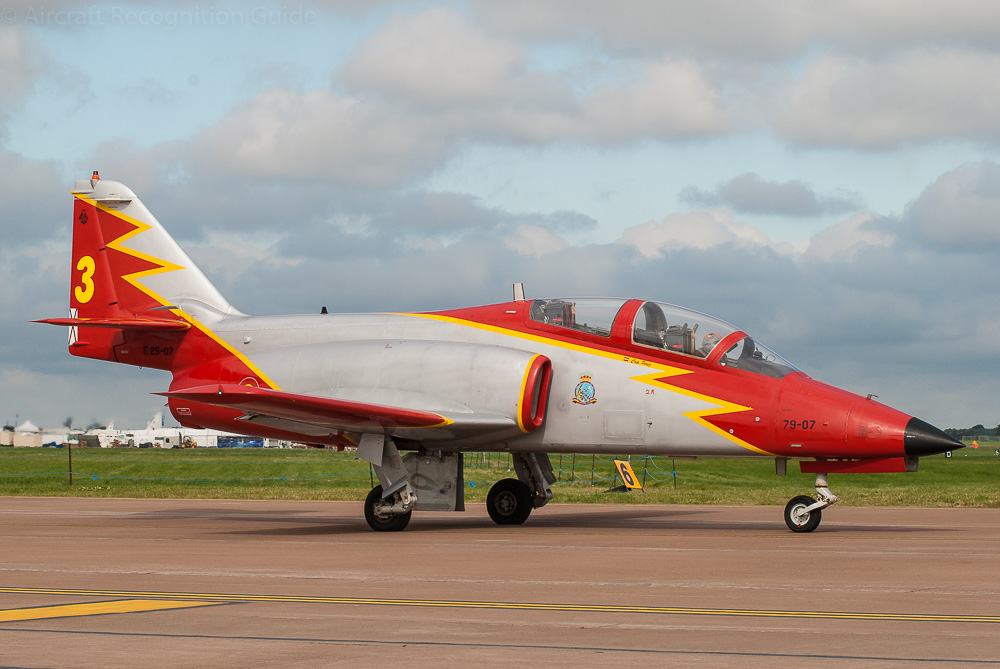
Douglas A4D/A-4 Skyhawk
The Douglas Skyhawk originates from the 1950s, but is still operational nowadays, both as a frontline fighter and as an agressor for flight training. Perhaps this is because it is a small and light weight yet capable fighter.
The A-4 (before 1962 designated A4D) has delta wings with a small span. The trailing edge has no sweep though. The main gear retracts partially in the wings and partially in long pods under the wings. The legs are quite long, but the nose gear is even longer, making the A-4 lean backwards on the ground, a typical pose of the Skyhawk. The single engine in the rear fuselage gets the air from two D-shaped intakes behind the canopy. At the rear is a cruciform tail, with a nearly triangular vertical stabiliser, at least on most versions.
The A-4 has delta wings that appear to be quite long from this angle, but the span is actually small. The trailing edge has no sweep. Note the pods under the wings for storing the main gear.
The tail of the Skyhawk is cruciform, with a nearly triangular vertical part. In front is a modest dorsal fin.
Different versions
How to recognise the different versions of the A-4 Skyhawk will be added later.
Confusion possible with
CASA C-101 Aviojet
The CASA Aviojet also has a sort of D‑shaped air intakes and cruciform tail. For the rest they are totally different, as the Aviojet has straight wings, shorter landing gear and an exhaust before the end of the fuselage.
Douglas F4D/F-6 Skyray

This is another Douglas carrier based fighter from the same time frame and with delta wings. It has no horizontal stabilisers though and triangular air intakes in the wing roots.



